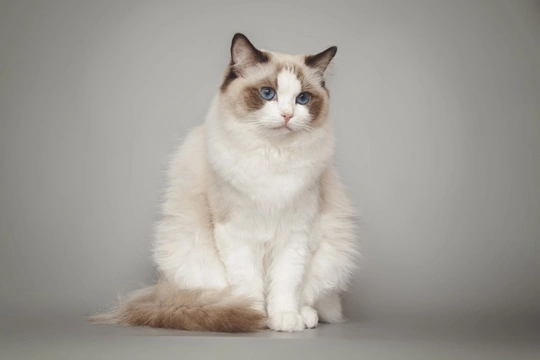
Why is the Ragdoll such a popular cat breed?
The Ragdoll is the second most popular cat breed in the UK overall – only being beaten to first place by the British shorthair. They’re also a relatively recent addition to the list of pedigree cat breeds, only receiving formal recognition in the UK by the Governing Council of the Cat Fancy or GCCF in 1990. This makes their reasonably rapid rise to prominence in the UK – which is not their country of origin – even more impressive.
If you already own a Ragdoll cat, you probably have a very clear list in mind of what’s good about them and why they are in such demand – but if you’re considering buying a Ragdoll or are just starting to research different cat breeds to make a decision on which one to choose, you might be wondering what’s behind their appeal.
In this article, we will look at the reasons behind the Ragdoll cat breed’s huge level of popularity, and explain what makes them such good pets. Read on to learn more.
What is a Ragdoll?
The Ragdoll is a pedigree cat breed that has a colourpoint coat and distinctive blue eyes. They are reasonably large and well-built cats with semi-longhaired fur that is very smooth and silky, and they are also incredibly docile and gentle as a general rule too.
They are very sweet and affectionate cats that like the company of people, and that often follow their owners around like dogs! The breed is perhaps most notable for its ease of handling and lack of aggression towards other pets, often including strange cats.
How the Ragdoll got its name
The story behind the Ragdoll’s name is an interesting one – and it all begins with one very unique cat named Josephine that lived in the USA in the 1960’s.
Josephine was a longhaired white cat that is thought to have possessed Persian and Angora breed origins, and that produced several litters in her lifetime with local Burmese or Birman male sires.
One of the litters that Josephine produced came with an interesting and unexpected trait – a tendency to fall totally limp and relaxed when picked up. Her next litter shared this trait too, and consequently, the original breed line was founded from these litters and selectively bred over subsequent generations to inherit certain desirable traits that can be seen within the breed today.
These include a relatively large build, a kind temperament and particularly, the trait of going limp when picked up – all accompanied by the semi-longhaired colourpoint fur and blue eyes we now recognise within the breed standard.
Because of the tendency of cats of the breed to go limp when picked up, they were named Ragdolls – and the very first person to deliberately breed for this trait and so, the founder of the breed actually held the Trademark on this term as the breed’s name up until 2005.
The Ragdoll personality
The Ragdoll cat’s personality is really unlike that of any other breed, and this helped to establish and secure their enduring appeal.
First of all, the breed’s tendency to go limp and totally relaxed when held is quite unique, and nobody is really sure why this occurs, or how the trait has been replicated in subsequent generations after the initial litter. Additionally, Ragdolls as a whole are known for their sweet and gentle natures – they are highly unlikely to scratch, bite, or play roughly, even in self-defence.
They are not particularly streetwise, and are very trusting of both people and other animals, which can cause problems in cats of the breed that are permitted unsupervised access to outside. For this reason, many Ragdolls are kept indoors only, or access the outside within an enclosed pen – or even taken out on a lead, which they are usually very tolerant of.
They are highly affectionate and like to have company, spending a lot of time with their owners out of choice and often, following them around the home.
Ragdolls are generally placid and fairly quiet, and spend a lot of time cuddled up snoozing!
The Ragdoll coat and care
The Ragdoll coat itself is quite distinctive, as it is semi-longhaired with a very soft and silky texture. Whilst they are not one of the breeds with very long hair and a great tendency to get matted up and develop knots, they do need regular brushing and grooming to keep their coats in good condition.
Some Ragdoll owners even bathe their cats regularly too, something else that they tend to tolerate well.
Why are Ragdolls so popular?
All of the Ragdoll’s core traits combined have helped to ensure their relatively rapid rise to popularity, and position as the UK’s second favourite cat breed overall. Their very gentle natures and almost naïve quality garner a lot of attention, and the fact that the breed is very good looking and has such a lovely coat helps a lot too.
If you are considering buying a Ragdoll cat, it is important to think about the special care and management needs that the breed often comes with, in terms of keeping them safe and regularly grooming their coats. It is also important to find out the basics of the breed’s health, and learn about the potential hereditary health conditions that Ragdolls can be prone to as well.



